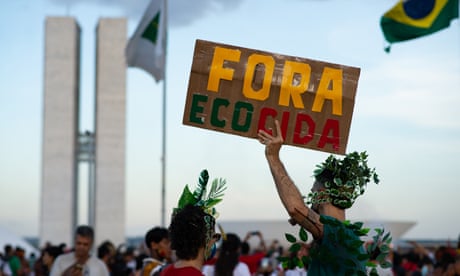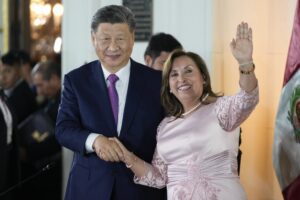“The most important and sacred thing for us is to prevent diseases and control nature itself,” says Indigenous Yurutí Nelson Rodriguez, whose traditional name, Neñú, means leader of the elders. “This is because the nature surrounding communities gives a person their daily sustenance.”
Speaking from Mitú, the capital of the far-flung Vaupés department in Colombia’s Amazon, Rodriguez wears a red golf shirt, his hands painted black up to the wrists, part of a dabakuri abundance ceremony. As a traditional healer, he says these ceremonies are fundamental for his community’s physical and spiritual health and a part of living in harmony with nature – which has become an ever more significant challenge year after year.
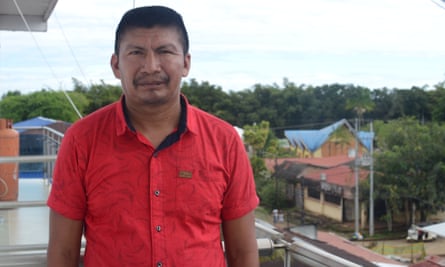
Rodriguez, as one of the Indigenous leaders and environmental defenders of his region, has become a target for dissident guerrillas, drug traffickers and transnational criminals in Colombia and the Amazon region. The most recent report from the NGO Global Witness found that Colombia is the deadliest country in the world to be an environmental defender, with 60 deaths last year – more than a third of all killings.
“The most harmful damage that unbalanced our good life was this damage that no one talks about,” says Rodriguez, who went into exile after becoming a marked man for trying to rescue his brother, recruited by criminal groups.
The report revealed that at least 177 people were killed last year defending the environment around the world, and a third of the victims were Indigenous – even though they represent only 5% of the global population.
“Indigenous peoples play a pivotal role in protecting the world’s forests, so it’s perhaps no surprise that they have been particularly and viciously targeted,” says Laura Furones, a forest governance expert who advised on the report.
Colombia’s Truth Commission found that Indigenous peoples were disproportionally affected during more than 50 years of civil war in the country: 14 Indigenous Amazonian peoples were put at imminent risk of physical and cultural extermination; the Revolutionary Armed Forces of Colombia (Farc) murdered Indigenous leaders for challenging their authority; and Indigenous youth were forcibly recruited, swelling the Farc’s ranks to continue the war against the national government.
Despite signing a peace accord with the Colombian government in 2016, some Farc fighters did not lay down their arms. Instead, they morphed into illegal armed groups, making money from unlawful gold mining and transporting drugs and weapons.
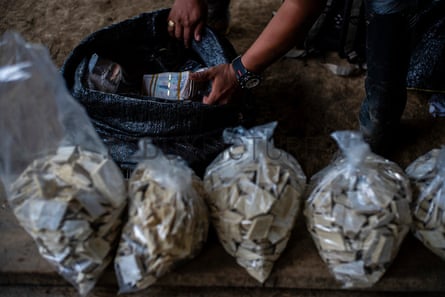
In May this year, Colombia’s ombudsman’s office reported that the Farc dissidents had forcibly recruited 17 Indigenous young people in the departments of Amazonas and Vaupés. Other community members were tortured and murdered during incursions by illegal armed groups seeking to control land and communities.
The presence of these groups means the first voice I obey may not be my elder but the person with the guns
Alejandro Chavez
“These developments are having a serious impact on the exercise of the collective rights of Indigenous peoples, affecting the exercise of autonomy or self-determination, cultural identity and the right to territory,” says ombudsman Carlos Camargo Assis.
Alejandro Chavez, an adviser to Amazonian Indigenous governments, says: “These (illegal) economies fragment and break the communities from the inside. For me, this is one of the most worrying impacts on the social fabric.”
Chavez says the armed groups offer work to those with few economic opportunities and criminal gangs especially seek young Indigenous men, as they know the jungle and have the physical strength to carry heavy loads.
“Undoubtedly, the presence of these groups has imposed new command structures,” says Chavez. “And that means the first voice I obey may not be my elder but the person with the guns.”
The Farc dissidents have also been connected with Brazilian criminal groups such as Comando Vermelho and Primeiro Comando da Capital (PCC), who recruit Indigenous youths to move drugs and illegally mined gold.
“These networks operate across borders,” says criminologist Bram Ebus. “When armed groups decide who enters, who leaves the zone, who lives and who dies, they are the law.”
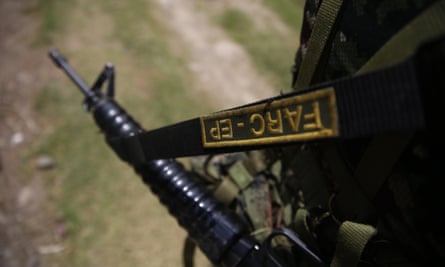
Ebus says these illegal armed groups have learned to work together, overcoming barriers of language and culture. As part of Amazon Underworld, a cross-border investigative mapping and reporting initiative, he says they found 100% presence of organised crime and armed groups in border municipalities.
“When there is a police operation, it is very easy to cross the border to another country to evade the law,” says Ebus.
While it will be necessary for countries to boost Amazonian economies to provide economic opportunities for forest communities, Ebus says a regional security strategy is where governments are falling short.
“We are seeing a dramatic expansion of organised crime in the Amazon,” he says. “We see groups that are not originally from the region, but from urban centres such as São Paulo and Rio de Janeiro, that came to the Amazon to occupy drug trafficking routes but stayed for the gold, timber, and diversified their businesses, taking advantage of the natural resources of the Amazon, which gives them a high growth potential.”
Ebus says the groups are reinvesting the money into apparently legal businesses such as cattle ranching or industrial agriculture, driving further deforestation. With their vast profits, the criminals are bribing judges, prosecutors, police and other poorly paid state officials, creating an increasingly corrupt and dangerous operating environment.
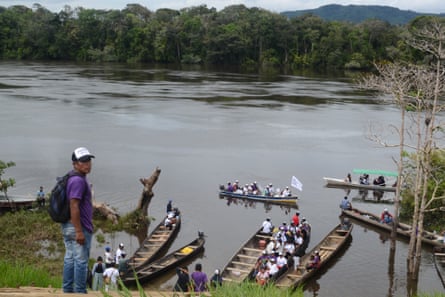
“Things are moving very slowly, and that’s problematic because there is a very, very small window of opportunity, with two progressive presidents of the economically strongest countries [Gustavo Petro in Colombia and Luiz Inácio Lula da Silva in Brazil] in the Amazon who have environmental conservation very high on their political agenda,” says Ebus.
“The political landscape in Latin America can change very quickly, and we can’t miss this key moment to change the course of the future of the Amazon.”
Research shows Indigenous peoples are the best guardians of forests and the Cop15 framework and the UN’s Intergovernmental Panel on Climate Change has officially recognised the crucial role of their culture and knowledge in addressing the planet’s biodiversity and climate crises.
Susana Muhamad, Colombia’s environment minister, says transnational crime and violence against nature defenders is shameful. “We have a process of degradation driven by illicit economies and often also by the same development models that we have promoted from our states,” says Muhamad. “A social crisis is affecting Indigenous peoples and the communities that inhabit the Amazon.”
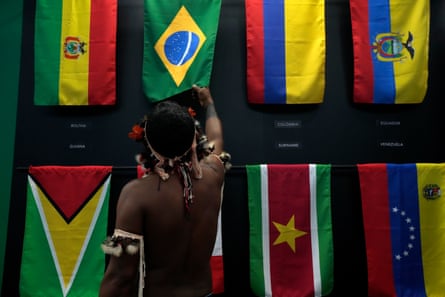
In August, the leaders of all eight Amazonian countries met in the Brazilian city of Belem to find common ground in protecting the rainforest. President Petro of Colombia and President Lula of Brazil made the environment a priority and pushed fellow leaders to an ambitious agreement.
The resulting Belém Declaration received mixed responses from environmentalists, but it called on wealthy nations to help them develop a Marshall-style plan to defend the Amazon, and pledged to work together to ensure its survival.
Juliana Sánchez Castellanos, an anthropologist at Gaia Amazonas, a Colombian NGO, says: “They [Indigenous peoples] have managed this biome in the way that it is unique. The Indigenous traditional knowledge has made it possible for the Amazon to be safeguarded, to have a kind of vitality and to fulfil its ecological functionality, so that it is healthy and people can live well.”
Source : The Guardian








